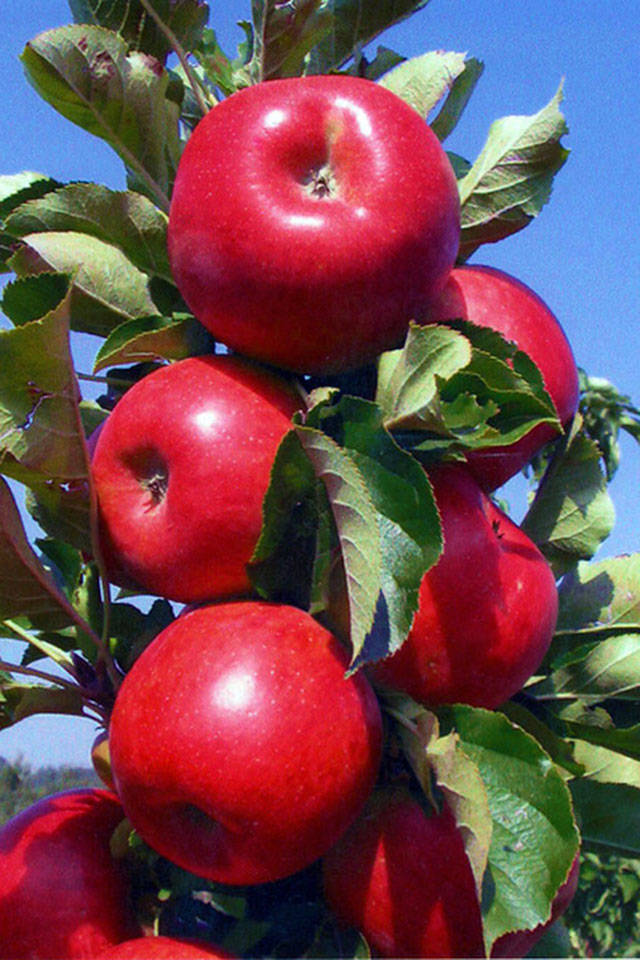By Steve Smith
Believe it or not, by the end of this month garden centers will be stocked with all the new and tried and true varieties of fruit trees that are well-suited for our unique marine climate. For the most part, these trees will be bare root – which means that the roots have no soil on them. The new tree gets taken home in a plastic bag and needs to be planted that same day.
There are also potted up fruit trees available. With proper care and feeding, you will be able to start harvesting the fruits of your labor the following year.
I am inclined to think that there is a certain amount of romance and nostalgia surrounding home orchards. I, for one, remember as a youngster traveling north from San Diego to my great grandmother’s house in Santa Anna where she had two ginormous avocado trees that we could climb and pick handfuls of avocados from. Not far from her home was my uncle’s “ranch” in Tustin where I got my first taste of a persimmon. It was with great trepidation that I bit into what looked like a tomato to me, but what turned out to be a delightfully sweet fruit. I suspect I might have also experienced my first fig on one of those outings as well. 60 years later, I still have fond memories of those events.
Growing backyard fruit can be loads of fun and very gratifying. Over the years, to reduce labor in commercial orchards, breeders have developed dwarf root stocks that keep trees much smaller – homeowners have definitely benefited from that trend. Apples now come in semi-dwarf (12’ to 15’ tall) to dwarf (10’ to 12’ tall) to mini-dwarf (8’ to 10’ tall) root stocks, which keep the trees to growing to a more-manageable size. At this point, every variety of fruit tree we sell has been grafted onto some kind of dwarfing root stock.
Dwarf root stocks can help tremendously in managing your home orchard, but there are also a few other options that will help you save even more space so you can incorporate them into your yard. Espaliered trees have been trained to grow on a trellis horizontally and can easily be planted on a fence or even a south-facing wall. These espaliers are often grafted with multiple varieties of the same fruit, so that on one main stalk you can have three different flavors of apples, for example. You can usually find apple and pear versions of espaliered trees.
Combination trees have 4 to 5 varieties of the same fruit, saving a lot of space and helping to take care of pollination issues. They do require a bit more attention to pruning, as each branch is a different flavor and may have different needs. Apples, pears, and cherries seem to be the best candidates for combination trees.
One other development in the space-saving department is the introduction of columnar or colonnade fruit trees, also known as “urban fruit trees”. At this point, apples are the only type that come in this shape. Urban apple trees will only grow 8- to 10-feet tall and remain only 2- to 3-feet wide, so you can plant them as close as 3-feet apart. They even grow well in containers, making them perfect for patios and porches.
Introduced from the Czech Republic, there are four new varieties: “Blushing Delight”, “Golden Treat”, “Tangy Green”, and “Tasty Red”. All are reported to be crisp, delicious and disease resistant.
Fruit trees are seasonal and once they are gone you will have to wait until next year to find them again. Plus, the sooner you start your home fruit-tree growing efforts, the sooner you will be harvesting and creating memories.
Steve Smith owns Sunnyside Nursery in Marysville and can be reached at info@sunnysidenursery.net
P.S. – Sunnyside will be hosting a free class, “PNW Fruit Trees”, Jan. 25 at 10 a.m. and 2 p.m.; www.sunnysidenursery.net.


